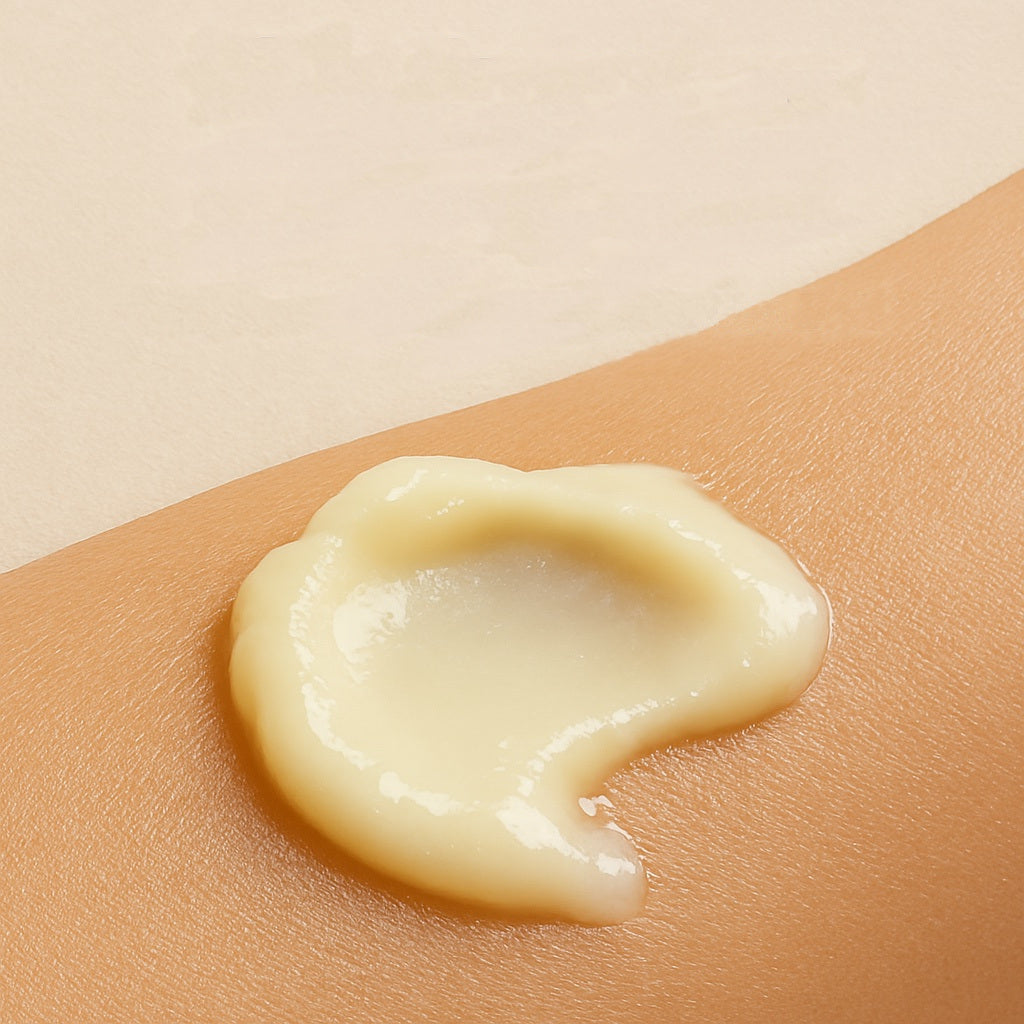
Nilotica’s Low Melting Point: A Skincare Advantage You Can Feel
Share
Imagine a butter that melts at the touch of your fingers, moisturising and nourishing in an instant. That's the experience of East African Nilotica shea butter. In the world of natural cosmetic ingredients, Nilotica shea butter is characterised by its low melting point – a simple property that makes all the difference to the way it feels on your skin.
The Science Behind Melting Point
In chemistry, the melting point is the temperature at which a substance begins to change from a solid to a liquid state. In skincare, it is the point at which butter begins to soften and melt.
Have you ever noticed that coconut oil becomes liquid on a warm day or that cocoa butter remains solid when not heated? That's the melting point in action. A low melting point means that a butter will soften at a lower temperature—often at body temperature—whereas a butter with a higher melting point requires more heat to liquefy.
The Nilotica Difference
Nilotica shea butter has a significantly lower melting point than most cosmetic butters. West African shea butter normally begins to melt at around 32°C (90°F) and cocoa butter at around 35°C (95°F). Nilotica shea butter, on the other hand, begins to melt at around 25-30°C (77-86°F).
In Practice
It means that Nilotica shea butter is softer at room temperature and practically melts on contact with your skin. A jar of Nilotica shea butter has a creamy, smooth texture even in a cool room, whereas West African shea or cocoa butter can feel stiff or waxy until warmed.
The secret is in the composition: Nilotica shea butter is richer in oleic acid (a fatty acid liquid at room temperature) and lower in stearic acid (a harder fat). This makes it naturally softer and even semi-liquid when warm.
What You’ll Notice:
1. Melts on Contact
The moment Nilotica shea butter touches your skin, it melts into a silky oil because your body temperature (about 37°C/98°F) is well above its melting range. It glides on effortlessly. No hard rubbing, no waiting for it to soften, no heating. It melts immediately.
2. Fast Absorption
As it melts, Nilotica shea butter releases its nutrients in a form that your skin can absorb quickly. The light, fluid oil penetrates deeply and nourishes the skin without remaining on the surface. Users often find it doesn't feel greasy because it penetrates so well, leaving moisturised skin with a velvety finish, not an oily sheen.
3. Soft, Whipped Texture
In the jar, Nilotica shea butter has a soft, creamy texture. Unlike harder cocoa or traditional shea butter, you don't have to chisel out chunks or warm it up—it's ready to pamper your skin immediately.
4. Delicate Fragrance
East African Nilotica shea butter has a mild fragrance—light, neutral, with a faint nutty sweetness. It won't overpower your senses or clash with other fragrances—a subtle note perfect for minimalist beauty routines.
Product Storage
Due to its low melting point, Nilotica shea butter is temperature-sensitive. This purity and softness is part of its charm, but you’ll need to be a bit careful when storing it.
- Store in a cool, dry place, away from direct sunlight or heat sources. Below 24°C (75°F) is ideal.
- If the butter melts, there's no need to worry—simply stir gently and allow it to cool down again.
- Refrigeration can help, but let it return to room temperature briefly before use to regain softness.
- A slightly grainy texture after re-solidifying is normal and harmless. Melting and rapidly cooling it again can restore smoothness.
Why Melting Point Matters
The low melting point of Nilotica shea butter is not just a technical detail—it is what makes your skincare ritual indulgent and effective. From the moment you open the jar to the second it melts into your skin, Nilotica shea butter demonstrates how natural, minimally processed ingredients can deliver truly exceptional results.